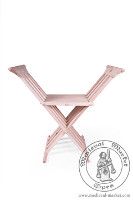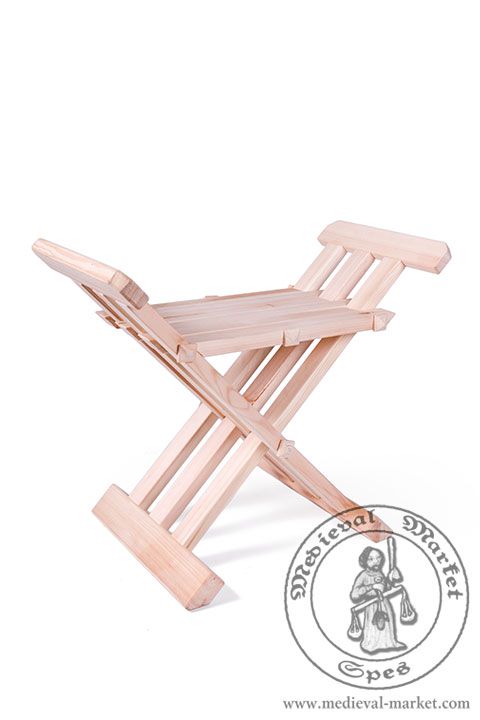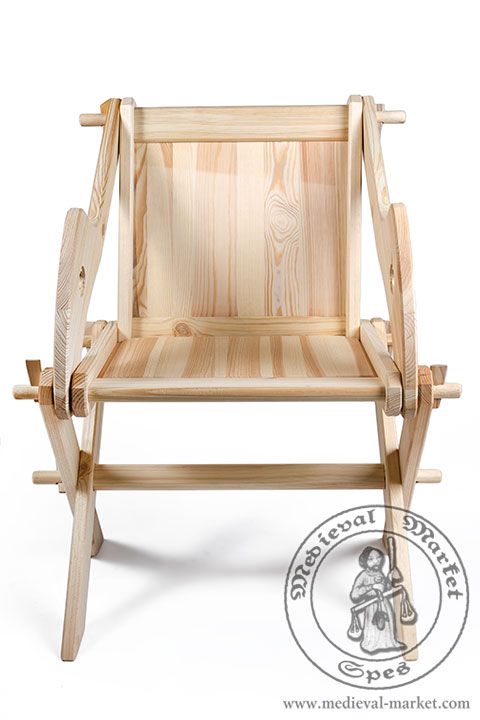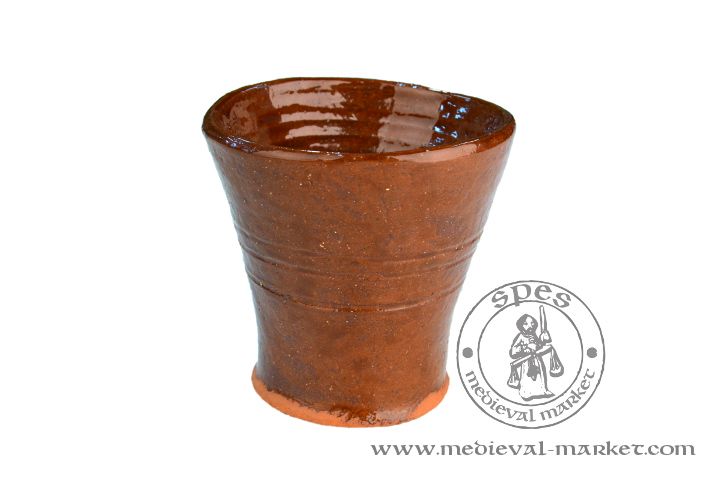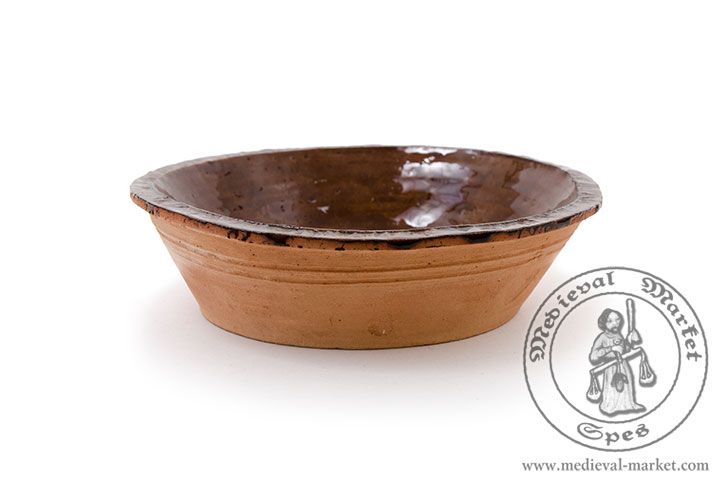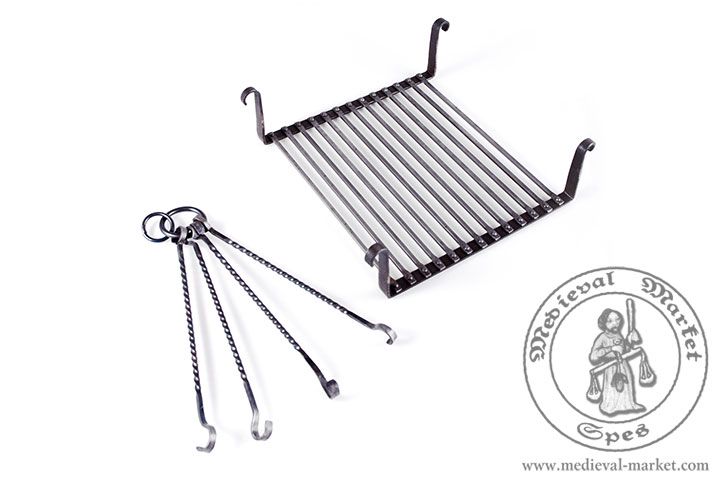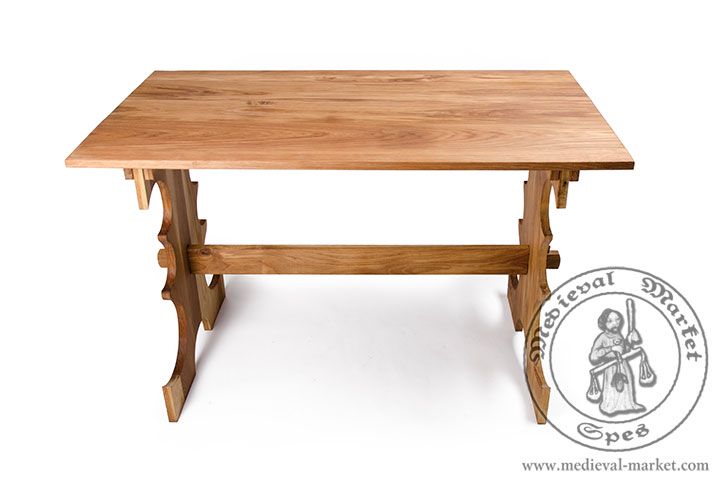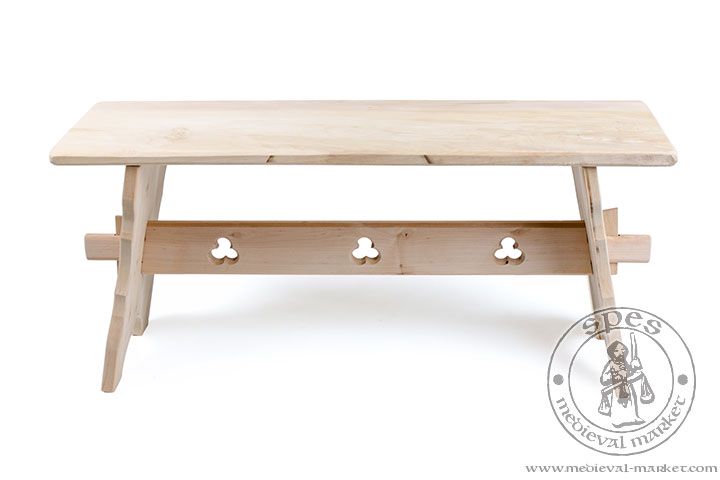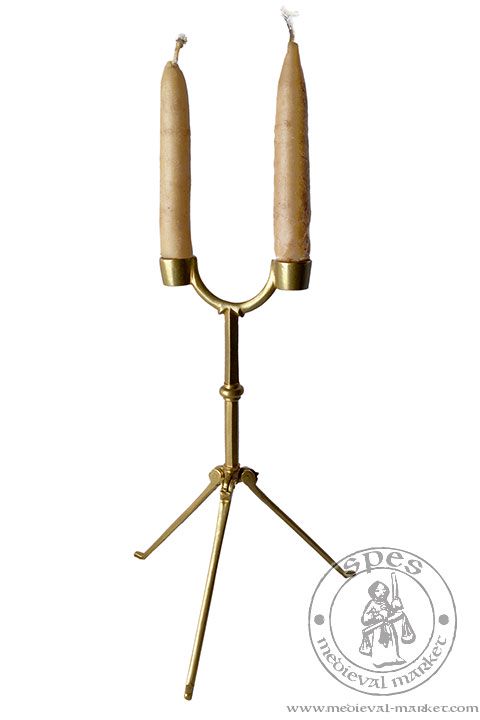If you wish to adjust your cookie preferences for this website, you can do so using your browser settings.



Category: Furniture > furniture
Folding X chair
Folding X chair
Century: XIV, XV| CODE | Material |
Standard
|
Price | |
| MDS1624 | Oak | Mixed | 239.00 EUR |
|
| MsS1627 | Pine | Mixed | 199.00 EUR |
|
Lowest price in the last 30 days
See how to place an order for several people
Our folding X chair is a light medieval furnishing made of wood. Its seat is on the height of 50 cm, ornamented with rosettes. This type of historical furniture is very handy. Thus, it's a perfect choice for a journey or medieval camping.
The “X chair” name derives from the characteristic leg arrangement.
The folding X chair differs from the curule chair with lower position of armrests. On the other hand, Savonarola chair and scissors chair have backrests. The basic version of this product have wooden seat. Still, in our assortment you will also find folding chairs with seat made of fabric.
The history of an X chair
It is worth to underline that folding X chair is one of the most popular types of historical chairs. This furnishing was known in the ancient times in the Mediterranean Basin, e.g. in the Egypt. It gained its greatest popularity in medieval Europe. In this period it was used, for example, during liturgy rites.
An example of medieval X chair can be found in Cappella di san Martino, kept in the Basilica of Saint Francis in Assisi.
In spite of fact that medieval furniture was used as house equipment, we can also find it in knights' camps. These items were a proof of high social status and wealthiness of their owner. Among camp equipment we can find: buckets, baskets, pots, tables and stools, historical chairs, chests, and beds. Early Gothic furnishings were usually made of weighty planks of wood. The richest group of original furniture saved till modern times are chests. These are often characterized by rich adornments. They often have visible emblems and embroideries.
How to enrich a medieval chair?
Despite its simplicity, the X chair was sometimes ornamented and encrusted with an elephant bone. We are coming across these expectations. Our medieval furniture can be manufactured with various embroideries and ornaments, even hand-painted. Contact us and share pictures, and we will prepare an individual offer for you.
NOTE! There is an option of impregnating the historical furniture with linen oil. If you are interested, please let us know in the “additional information” field when placing an order. The cost of impregnation is 6% of additional payment from the price of the product.
Due to the fact that our furniture is a result of craftsman's work, the measurements provided here might differ from the real ones by maximum +/- 1.5 cm.
Our medieval furniture is finished with sandpaper of 60-level grit. Therefore, in some softer spots of a piece of furniture, you may find some slight, natural wood nap which is a result of polishing. It practically disappears after impregnating the furniture with the use of natural methods such as linen oil or wax. If you plan to varnish the furniture in more contemporary way and want us to make the furniture’s surface smoother (i.e. use sandpaper of higher grit), please contact us and we will tell you the price of the option.
ATTENTION! You can order impregnation of furniture with linen oil for a surcharge. To choose this option, write your wish in "additional information" box during placing the order. The price of impregnation is 6% of the value of the product.
Although furniture was home equipment, we can also find furniture in knight camps, where they spoke of the status and wealth of the owner. In camps we can find such equipment as: buckets, baskets, pots, tables, stools, chairs, chests and even beds. The early gothic furniture was made from massive boards. Out of the survived originals the most common are chests, which particularly stand out because of the richness of the form (there often appear on them carves and emblems of the owners).





 Female Clothing
Female Clothing Male clothing
Male clothing Accessories
Accessories
 Tents
Tents Armament
Armament HMB Line
HMB Line Miscellaneous
Miscellaneous Rent
Rent In stock
In stock Special Offers
Special Offers Search
Search Your Account
Your Account About us
About us Sizing
Sizing How to buy
How to buy Blog
Blog Links
Links Events
Events
